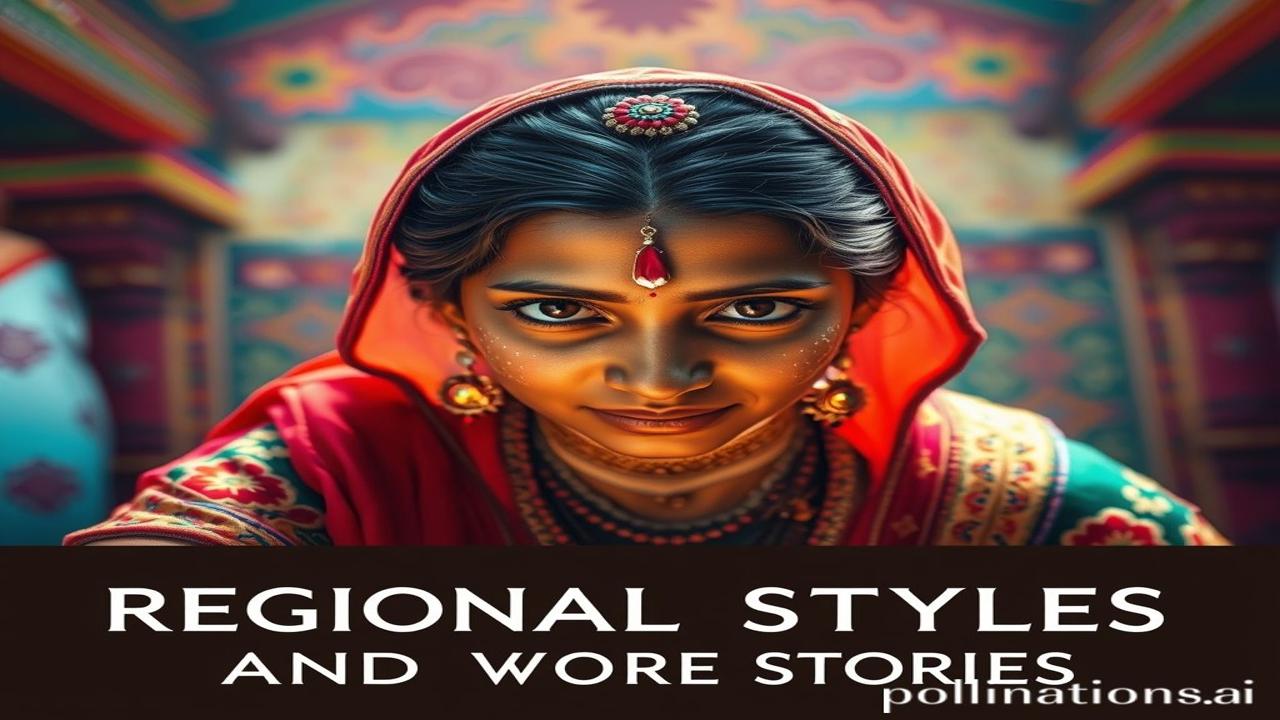Threads of Time: Exploring India’s Regional Embroidery Styles and Their Untold Stories
Kabhi socha hai, agar kapde bol sakte toh kitni kahaniyaan sunaate? Imagine, if every stitch held a whisper of the past, a secret of the artisan, a song of the soil it came from. India’s regional embroidery styles are exactly that – talking textiles, each thread woven with history, culture, and the soul of its region. Let’s embark on a journey through these vibrant threads, exploring the stories they tell.
What is Regional Embroidery and Why Does it Matter?
Regional embroidery is more than just decorating cloth. It’s an art form passed down through generations, a visual language that speaks of local customs, beliefs, and the environment. Think of it as painting with thread. Each region in India, with its unique climate, history, and cultural influences, has developed its own distinct style of embroidery. From the intricate chikankari of Lucknow to the vibrant phulkari of Punjab, each stitch carries a story. These styles are crucial because they are living embodiments of dharohar (heritage) and pehchan (identity). They remind us of our rich past and connect us to our cultural roots.
Historical Roots: Tracing the Threads
The history of Indian embroidery stretches back centuries, with evidence of intricate needlework found in archaeological sites dating back to the Indus Valley Civilization. Over time, various rulers and dynasties influenced the development of different styles.
- Mughal Influence: The Mughal era saw the introduction of Persian and Central Asian motifs into Indian embroidery, resulting in opulent and intricate designs. Zardozi, with its use of gold and silver threads, became a hallmark of royal attire.
- Colonial Impact: The British colonial period brought about both challenges and opportunities. While some traditional styles suffered due to industrialization, others adapted and evolved to meet the demands of the global market.
Zameeni Sach: Life Woven into Fabric
Imagine Rukmini, a young girl in a village in Punjab, learning the art of phulkari from her grandmother. The vibrant colors of the threads – crimson, saffron, emerald – reflected the lush fields surrounding her home. Each stitch was a prayer, a wish for prosperity and happiness. Her fingers danced across the fabric, creating intricate floral patterns that told stories of love, joy, and the bounty of nature.
Or picture Karim, a skilled artisan in Lucknow, meticulously crafting chikankari on delicate muslin. His fingers, nimble and practiced, transformed simple fabric into works of art. The motifs – jasmine, lotus, paisley – were whispered secrets passed down through his family, each stitch a testament to his ancestors’ skill and dedication. The air hung heavy with the scent of jasmine and sandalwood, a reminder of the city’s rich cultural heritage.
These were not just artisans; they were storytellers, weaving their lives, dreams, and aspirations into every thread.
Cultural Significance Today: An Echo of the Past
Even today, these embroidery styles hold immense cultural significance. We see them in bridal trousseaus, religious ceremonies, and festive occasions. Phulkari dupattas are cherished heirlooms, passed down from mother to daughter, carrying the blessings of generations. Chikankari kurtas are a symbol of elegance and sophistication, worn by people across India and beyond.
These art forms are a testament to Bharatiyata (Indianness) and a reminder of the beauty and diversity of our cultural heritage. They connect us to our roots, reminding us of the skills, traditions, and values that have shaped our identity.
Mazedar Tathya (Fun Fact)
Log samajhte hain ki Kantha sirf Bangladesh mein popular hai, lekin asli sach yeh hai ki ye West Bengal aur Odisha mein bhi equally prevalent hai! (People think that Kantha is only popular in Bangladesh, but the real truth is that it is equally prevalent in West Bengal and Odisha!). This beautiful style of embroidery, characterized by its running stitch, originated as a way to repurpose old saris and cloths into quilts and blankets. It’s a symbol of sustainability and resourcefulness, reflecting the values of rural communities.
Visual and Sensory Layer: Smells, Sounds, and Textures
Imagine walking through the bustling bazaars of Lucknow. The air is thick with the scent of itr (perfume) and kebabs. You can hear the rhythmic clatter of looms and the chatter of artisans haggling over prices. The touch of chikankari fabric against your skin is cool and delicate, a testament to the skill and craftsmanship of the local artisans.
In a rural village in Punjab, the air is filled with the scent of mustard flowers and the sound of folk songs. The touch of a phulkari shawl is warm and comforting, a reminder of the love and care that went into its creation. The vibrant colors of the embroidery reflect the joy and optimism of the community.
Antim Vichar (Closing Insight)
These embroidery styles are not just decorations; they are living narratives, woven with the threads of history, culture, and human experience. They remind us of the importance of preserving our cultural heritage and celebrating the skills and creativity of our artisans.
“Kala toh ek dariya hai, jo hamesha behti rehti hai. Bas humein uski lehron ko sunna hai.” (Art is a river that always flows. We just need to listen to its waves).
